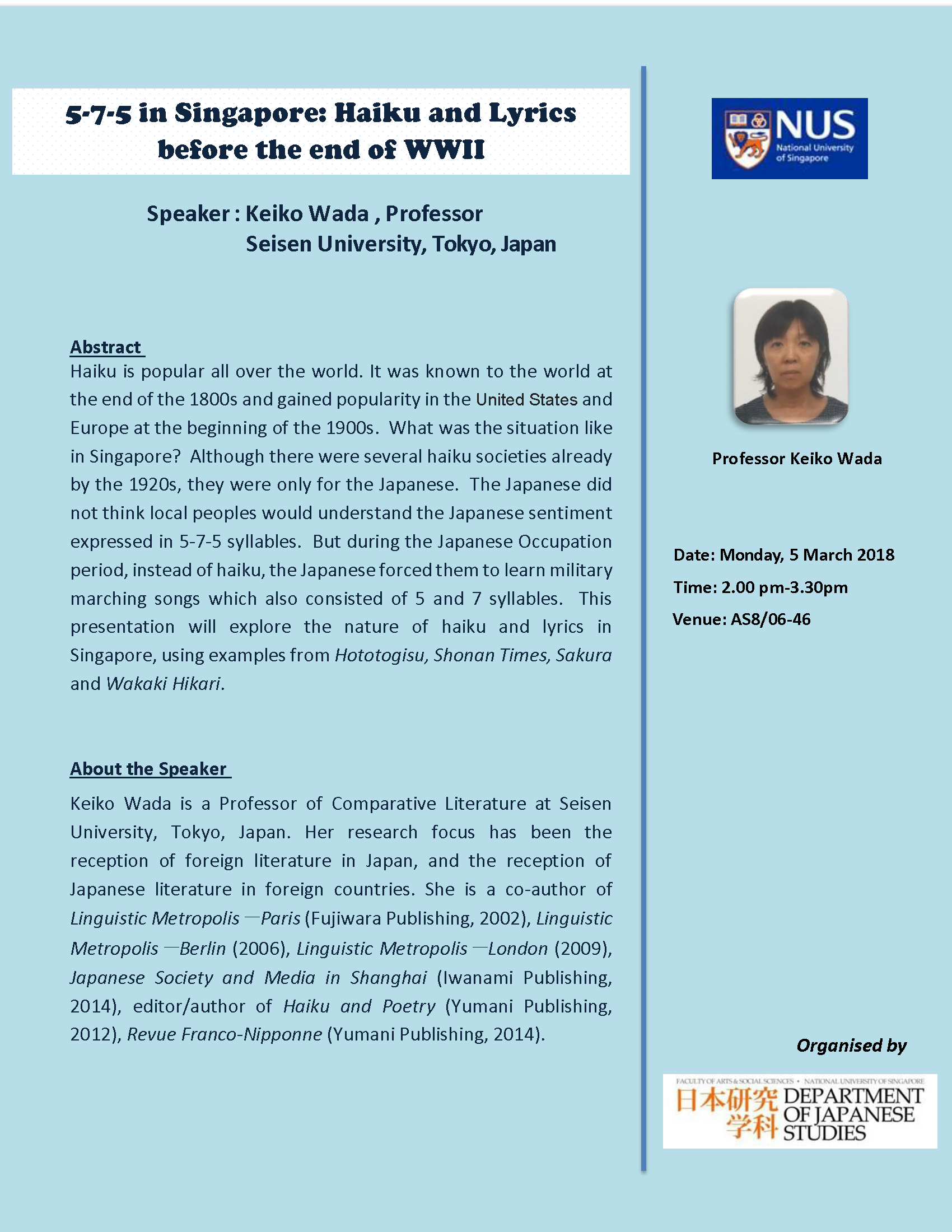5-7-5 in Singapore: Haiku and Lyrics before the End of WWII
Abstract
Haiku is popular all over the world. It was known to the world at the end of the 1800s and gained popularity in the United States and Europe at the beginning of the 1900s. What was the situation like in Singapore? Although there were several haiku societies already by the 1920s, they were only for the Japanese. The Japanese did not think local peoples would understand the Japanese sentiment expressed in 5-7-5 syllables. But during the Japanese Occupation period, instead of haiku, the Japanese forced them to learn military marching songs which also consisted of 5 and 7 syllables. This presentation will explore the nature of haiku and lyrics in Singapore, using examples from Hototogisu, Shonan Times, Sakura and Wakaki Hikari.
About the Speaker
Keiko Wada is a Professor of Comparative Literature at Seisen University, Tokyo, Japan. Her research focus has been the reception of foreign literature in Japan, and the reception of Japanese literature in foreign countries. She is a co-author of Linguistic Metropolis
- Paris (Fujiwara Publishing, 2002), Linguistic Metropolis
- Berlin (2006), Linguistic Metropolis
- London (2009), Japanese Society and Media in Shanghai (Iwanami Publishing, 2014), editor/author of Haiku and Poetry (Yumani Publishing, 2012), Revue Franco-Nipponne (Yumani Publishing, 2014).


